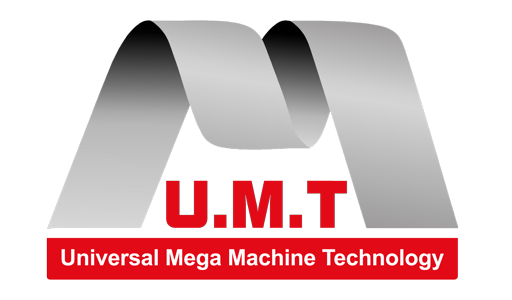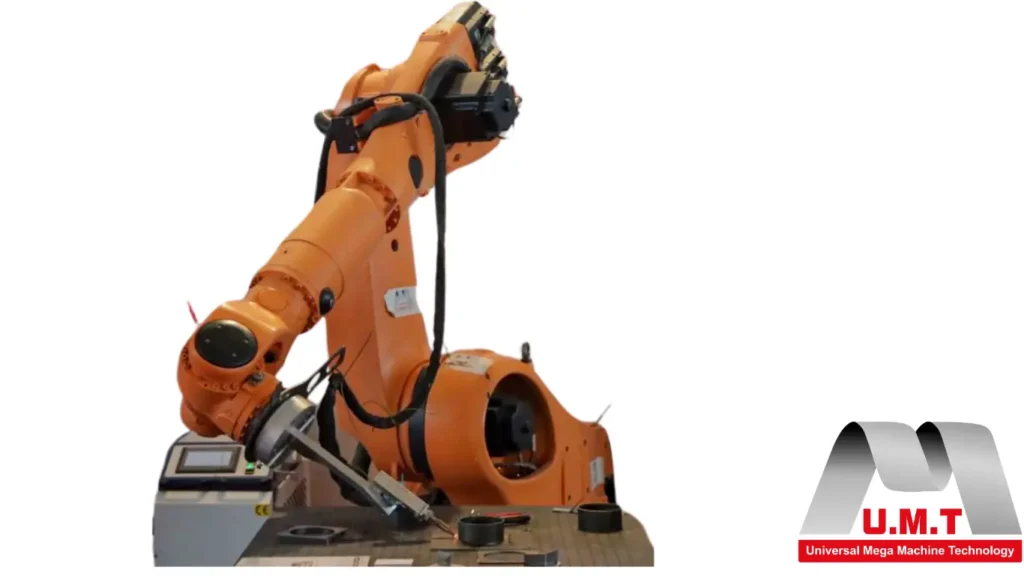In the modern industrial landscape, automation technologies continue to transform manufacturing processes, driving improvements in efficiency, precision, and safety. Among these advancements, robotic bending machines have emerged as a critical innovation in the field of metal fabrication. These machines combine the power of robotics with traditional bending technology to automate the manipulation and shaping of metal components, offering numerous benefits across various industries, including automotive, aerospace, construction, and consumer goods manufacturing. This essay provides a comprehensive overview of robotic bending machines, exploring their working principles, key features, applications, and the advantages they bring to contemporary manufacturing.
Understanding Robotic Bending Machines
At its core, a robotic bending machine integrates a robotic arm or system with bending tools to automate the process of bending metal sheets, plates, or tubes into desired shapes. Traditional bending operations, carried out manually or with simple tooling, often impose limitations in terms of speed, repeatability, and complexity of bends. Robotic bending machines overcome these constraints by leveraging programmable robotic systems that can precisely execute complex bending sequences with minimal human intervention.
Typically, the system consists of a robotic arm equipped with end-effectors—specialized tools that grasp, hold, or manipulate the metal workpiece. The bending operation may take place via a press brake integrated within the robot cell or through a dedicated bending machine to which the robot feeds material. The robot handles the positioning and orientation of the workpiece, enabling the execution of multiple bends at varying angles with high accuracy. Advanced control software coordinates the robot’s movements and bending parameters, ensuring consistency from part to part.
Components and Technologies
Robotic bending machines combine several key components and technologies:
Introduction to Robotic Bending Machines
Robotic bending machines are automated systems designed to bend sheet metal or other materials into desired shapes using robotic arms integrated with bending tools. Unlike traditional manual or semi-automated bending machines, robotic systems offer enhanced precision, versatility, and productivity, minimizing human error and increasing throughput. The key to their success lies in the sophisticated combination of mechanical components, sensors, actuators, control systems, and software that collectively enable complex bending tasks with high repeatability.
Key Components of Robotic Bending Machines
-
Robotic Arm
The robotic arm serves as the central manipulator in the bending process. Typically consisting of multiple articulated joints, the arm provides multiple degrees of freedom (usually six or more), allowing the end effector (the bending tool) to approach the workpiece from various angles. The arm’s design varies depending on the required payload, precision, and reach.
- Mechanical Structure: Generally constructed of high-strength steel or aluminum alloys, robotic arms combine lightweight design with rigidity to ensure accuracy.
- Actuators: Electric servo motors or hydraulic actuators power the joints, providing precise control over movement and torque.
- Encoders and Sensors: Position and torque sensors provide real-time feedback to the control system, ensuring accurate positioning during bending operations.
- End Effector / Bending ToolThe end effector or tool attached to the robotic arm performs the actual bending of the material. This component is crucial as it directly interacts with the workpiece. Various bending tools can be used depending on the bending type and material.
- Press Brake Tools: Includes punches and dies suited for V-bending, air bending, or bottoming.
- Rotary Benders or Roll Benders: For cylindrical or curved bends.
- Custom Grippers: Designed to hold or clamp specific parts securely during bending.
- Material Feed SystemTo automate the bending process fully, a robotic bending machine often incorporates a material handling system that feeds sheets or strips into the bending area. This can include conveyor belts, rollers, or automated loading stations.
- Automated Sheet Feeders: Align and position sheets before bending.
- Sensors and Cameras: Verify material alignment and presence to prevent errors.
- Robotic Material Handling: In some systems, separate robots load and unload materials for continuous operation.
- Control SystemThe control system is the machine’s brain, coordinating all components and orchestrating the bending operations based on programmed instructions.
- Programmable Logic Controllers (PLCs): Manage real-time machine operations and safety interlocks.
- Robotic Controllers: Specialized processors that control the robotic arm’s trajectory and tool operation.
- Human-Machine Interface (HMI): Touchscreens or computer terminals where operators program tasks and monitor the machine.
- CNC Integration: In more advanced systems, the bending machine integrates with Computer Numerical Control (CNC), enabling precise multi-axis control based on CAD/CAM data.
- Sensors and Vision SystemsIntegrated sensors and vision systems enhance accuracy and adaptability.
- Force/Torque Sensors: Monitor applied forces during bending to prevent damage or detect anomalies.
- Laser or Optical Sensors: Measure bend angles and dimensions in real-time.
- Machine Vision: Cameras identify workpieces, detect defects, and enable adaptive corrections during the bending process.
- Safety SystemsSafety is paramount in automated bending processes due to the high forces involved.
- Physical Barriers and Light Curtains: Prevent human access during operation.
- Emergency Stop Systems: Instantly halt operations if unsafe conditions are detected.
- Collision Detection: Software and sensors stop the robot if unexpected obstacles appear.
Core Technologies Enabling Robotic Bending Machines
- Advanced RoboticsThe evolution of industrial robotic arms, with improved articulation, payload capacity, and precision, has been fundamental to developing robotic bending machines. Modern robots employ compact, lightweight designs that conserve floor space and allow for complex motion paths essential for versatile bending operations.
- Computer Numerical Control (CNC)CNC technology provides the foundation for automated bending by allowing pre-programmed bending sequences based on detailed part geometries. CNC controllers translate CAD/CAM models into precise commands for the robotic arm and bending tools, ensuring consistent repeatability across batches.
- Artificial Intelligence (AI) and Machine LearningIncreasingly, AI algorithms are integrated to optimize bending parameters, predict tool wear, and improve quality control. Machine learning models analyze data from sensors and vision systems to adapt bending strategies in real time, reducing scrap and rework.
- Sensor Fusion and Real-Time FeedbackBy combining data from multiple sensors (force, torque, vision), robotic bending machines achieve high levels of accuracy and safety. Real-time feedback loops allow for immediate adjustments during bending, compensating for material variations or unexpected deviations.
- Collaborative RoboticsSome modern robotic bending systems utilize collaborative robots (cobots) designed to work safely alongside human operators. These systems are equipped with force-limiting technology and advanced sensor arrays to prevent injury, enabling semi-automated workflows where human expertise and robotic precision coexist.
- Simulation and Virtual CommissioningPrior to physical deployment, robotic bending processes are often simulated using advanced software platforms. Virtual commissioning allows engineers to program and test complex bending sequences, reducing setup times and minimizing errors during production.
Integration and Workflow in Robotic Bending Machines
The operation of robotic bending machines is typically a tightly integrated workflow:
- Programming: Engineers design parts using CAD software, defining bending sequences.
- Simulation: Processes are simulated to identify optimal parameters.
- Loading: Sheets are fed into the machine automatically.
- Positioning: The robot aligns the sheet accurately using sensors.
- Bending: The end effector performs bends according to the programmed instructions, with real-time feedback ensuring precision.
- Inspection: Vision systems verify the quality of bends.
- Unloading: Finished parts are removed by the robot or automated systems for further processing or packaging.
This seamless integration significantly increases productivity, reduces cycle times, and ensures high-quality outcomes.
Conclusion of Components and Technologies Robotic bending machines
Robotic bending machines are a culmination of advances in robotics, sensor technology, CNC control, and artificial intelligence. Their components—from robotic arms and bending tools to control systems and sensors—work in concert to automate and optimize the bending process, providing unmatched precision and efficiency in industrial production. As manufacturing demands continue to evolve, the technologies within robotic bending machines will also advance, integrating deeper AI capabilities, enhanced human-machine collaboration, and increased adaptability to address complex fabrication challenges. The continued development and refinement of these machines will undoubtedly play a critical role in shaping the future of automated metal forming and manufacturing at large.
Applications of Robotic Bending Machines
Robotic bending machines find applications in numerous sectors due to their ability to produce complex, accurate, and repeatable bends efficiently:
- Automotive Industry: Manufacturing of chassis components, brackets, and exhaust systems often requires precise bends in metal tubes or plates. Robotic systems can handle high production volumes with consistent quality.
- Aerospace Sector: The aerospace industry demands meticulous adherence to specifications and complex bends in high-strength alloys. Robotic bending machines ensure these needs are met while maintaining safety.
- Construction and Infrastructure: Structural steel components, reinforcements, and frameworks require bending operations, which can be greatly expedited by robotic automation.
- Consumer Goods and Appliances: Metal parts for appliances, furniture, and electronics housing can be formed efficiently with robotic bending, reducing costs and improving design flexibility.
- Tubing and Pipe Fabrication: Robotic bending is especially suited for pipe and tubing manufacturing, where precise bend radii and angles are critical for fluid flow and assembly.
Advantages of Robotic Bending Machines
The adoption of robotic bending machines offers numerous advantages over traditional manual or CNC-only bending processes:
- Increased Precision and Repeatability: Robots execute programmed sequences with high accuracy, reducing variability and defects across production runs.
- Enhanced Productivity: Automation leads to faster cycle times, minimizing downtime and increasing throughput.
- Flexibility: Robots can quickly switch between different bending tasks and part designs with minimal tooling changes, enabling small batch production and customization.
- Improved Safety: Removing human operators from direct contact with heavy machinery and sharp metal parts reduces workplace injuries.
- Labor Cost Reduction: While requiring skilled programming and maintenance, robotic systems reduce the need for manual labor in repetitive and strenuous operations.
- Complex Bend Capability: Robotic arms can orient and reposition parts to perform multi-axis bending sequences that are cumbersome or impossible manually.
- Integration with Digital Manufacturing: Robotic bending machines can be integrated into smart factory systems, allowing real-time monitoring, process optimization, and traceability from design to finished part.
Challenges and Considerations
Despite their benefits, robotic bending machines come with certain challenges that manufacturers must address:
- High Initial Investment: The capital cost of robotic systems and supporting infrastructure can be substantial, which may be a barrier for small and medium enterprises.
- Programming Complexity: Developing and maintaining robot programs requires skilled personnel and can be time-consuming, particularly when dealing with diverse part geometries.
- Tooling and Fixture Design: Custom end-effectors and tooling must be designed for efficient handling, which adds to setup times and costs.
- Material Handling and Setup: Feeding and positioning metal sheets or tubes into the robot cell often require additional automation or manual input, impacting overall efficiency.
- Maintenance and Downtime: Robots require regular maintenance and occasional repairs, which need to be managed to prevent production interruptions.
Future Trends and Innovations
The future of robotic bending machines is promising, propelled by advances in robotics, artificial intelligence, and materials engineering. Emerging trends include:
- Machine Learning and AI: Adaptive control systems that learn from production patterns can optimize bend sequences, detect errors early, and improve quality.
- Collaborative Robots (Cobots): Safer and more flexible robots that can directly interact with human operators, combining the advantages of automation and manual dexterity.
- Enhanced Sensor Integration: More sophisticated vision and force sensors will enable real-time adjustment and quality control during bending.
- Additive Manufacturing Integration: Combining robotic bending with additive processes to create hybrid manufacturing lines delivering complex, lightweight metal components.
- Improved User Interfaces: More intuitive programming environments lower the barrier to entry, enabling operators with less specialized training to manage robotic bending tasks.
Conclusion for Robotic bending machines
Robotic bending machines represent a significant advancement in metal fabrication, marrying the precision and flexibility of robotics with the traditional craft of metal forming. Their capacity to enhance production speed, accuracy, and safety makes them indispensable in modern manufacturing settings. While the initial costs and technical challenges require careful planning and investment, the long-term benefits of increased productivity and product quality justify the adoption of robotic bending technology. As industry 4.0 and digital transformation continue to shape manufacturing, robotic bending machines will play a pivotal role in driving efficient, adaptive, and intelligent production systems worldwide.




